Wheat gluten, binder and protein source in shrimp feeds, likely source of contamination
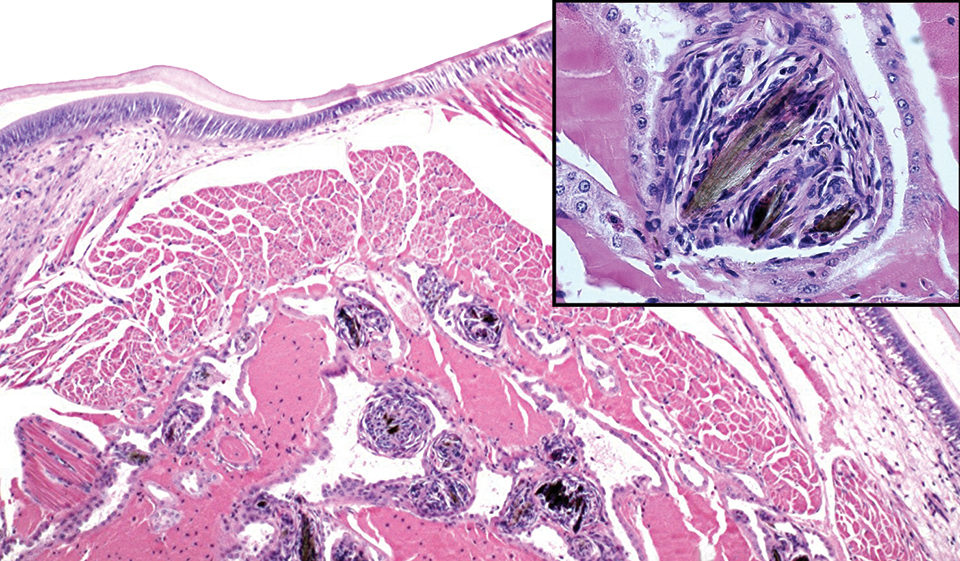
Pet food-related outbreaks of Melamine-Associated Renal Failure (MARF) in dogs and cats in 2004 and 2007 brought widespread attention to the use of melamine-tainted ingredients in animal feeds. The 2007 outbreaks of MARF were linked to the incorporation of vegetable protein concentrates tainted with melamine and cyanuric acid from China.
In 2007, the United States Food and Drug Administration (FDA) alerted livestock and fish and shrimp feed manufacturers about a voluntary recall of U.S.-made products used in feed production because several were found to contain melamine and related compounds. The products of concern for fish and shrimp feeds were binding agents.
Shrimp testing
In specimens of (Penaeus monodon) shrimp submitted to the University of Arizona Aquaculture Pathology Laboratory (APL), especially in mid-2007 and early 2008 from Asia, brownish-green needle- and platelike crystals were observed in multiple granulomas in the ducts of the antennal glands. The histological appearance of these crystals in shrimp was very similar to that of crystals induced by melamine/cyanuric acid in the kidneys of dogs and cats with MARF. The affected P. monodon otherwise showed no gross or histological signs of disease and little or no elevation in mortality rates.
Because other shrimp specimens from the same facility but fed a different feed did not present these unique lesions, samples of both “normal” and suspect feeds were submitted to a state-of-the-art analytical lab in Singapore for melamine testing. Melamine was not detected in the normal feed, while the two samples of suspect feed contained 112.50 and 183.39 ppm of melamine, respectively.
The pathology associated with the contaminated feed was discovered as a result of routine surveillance of shrimp populations being developed as specific pathogen-free stocks. Samples of shrimp are taken on a predetermined schedule for both molecular testing for recognized shrimp diseases and histological examination to detect other diseases that might otherwise go undetected or develop into major problems before corrective measures can be taken.
Feed trial
The melamine-tainted feeds were purchased from a feed supplier in Indonesia. However, no information was available on which ingredient or ingredients in the feeds contained melamine/cyanuric acid. Because wheat gluten is often used as a binder and protein source in shrimp feeds, and because this product was identified as the source of the melamine/cyanuric acid contamination in U.S. pet foods, it may be a likely source of the contamination.
Subsequent testing of one of the suspect feeds with (Penaeus vannamei) at the APL in Tucson gave some unexpected results. Within 10 days of initiating feeding, the test shrimp developed prominent granulomas in their antennal glands with the characteristic crystals. After nearly 40 days of feeding, test shrimp showed no obvious external signs of disease, stress or mortalities.
FDA: Unlikely risk
Despite concerns about melamine-contaminated feeds given to animals, FDA scientists in an interim safety/risk assessment determined that “based on currently available data, the consumption of pork, chicken, domestic fish and eggs from animals inadvertently fed animal feed contaminated with melamine and its analogs is very unlikely to pose a human health risk.”
The findings from the APL study, in which melamine-associated pathology is limited to the presence of insoluble crystals of salts of melamine/cyanuric acid in antennal glands, are consistent with the FDA assessment. This is because shrimp heads – the location of the antennal glands – are generally not eaten, and the crystals are totally insoluble in the wide range of polar and nonpolar solvents used in histological work.
(Editor’s Note: This article was originally published in the May/June 2008 print edition of the Global Aquaculture Advocate.)
Now that you've reached the end of the article ...
… please consider supporting GSA’s mission to advance responsible seafood practices through education, advocacy and third-party assurances. The Advocate aims to document the evolution of responsible seafood practices and share the expansive knowledge of our vast network of contributors.
By becoming a Global Seafood Alliance member, you’re ensuring that all of the pre-competitive work we do through member benefits, resources and events can continue. Individual membership costs just $50 a year.
Not a GSA member? Join us.
Authors
-

Donald V. Lightner, Ph.D.
Aquaculture Pathology Laboratory
Department of Veterinary Science and Microbiology
University of Arizona
Tucson, Arizona 85721 USA -
Carlos R. Pantoja, Ph.D.
Aquaculture Pathology Laboratory
Department of Veterinary Science and Microbiology
University of Arizona
Tucson, Arizona 85721 USA -
Rita M. Redman
Aquaculture Pathology Laboratory
Department of Veterinary Science and Microbiology
University of Arizona
Tucson, Arizona 85721 USA -
Jayagopal Pozoth Menon
Rajiv Gandhi Centre for Aquaculture
Andaman and Nicobar Islands, India
Tagged With
Related Posts
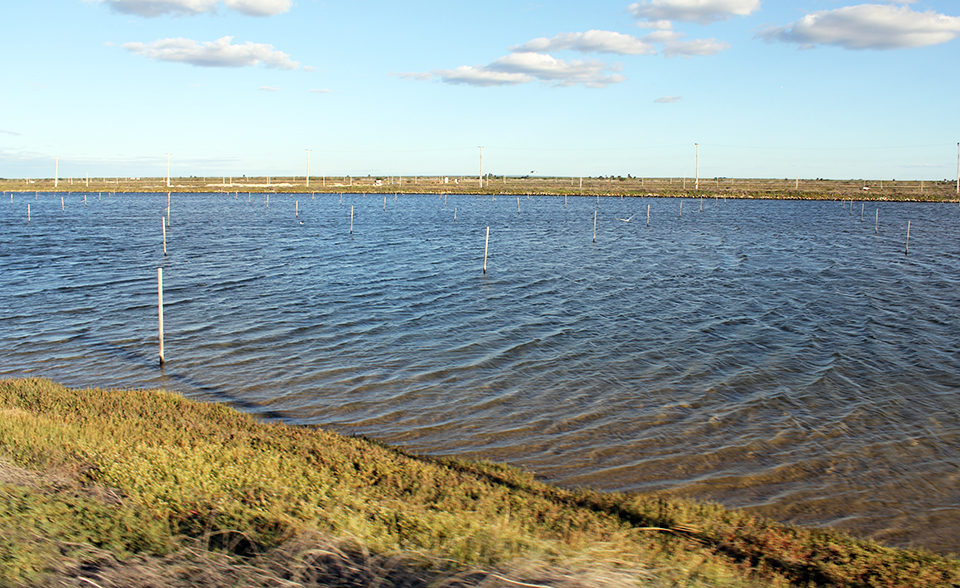
Health & Welfare
AHPN inferences based on behavior of vibrio bacteria
Vibrio parahaemolyticus, a strain of which is the cause of acute hepatopancreatic necrosis (AHPN), has both virulent and benign strains. This strain colonizes the stomachs of shrimp by the formation of a biofilm, which protects it from antibiotics and other potential treatments.
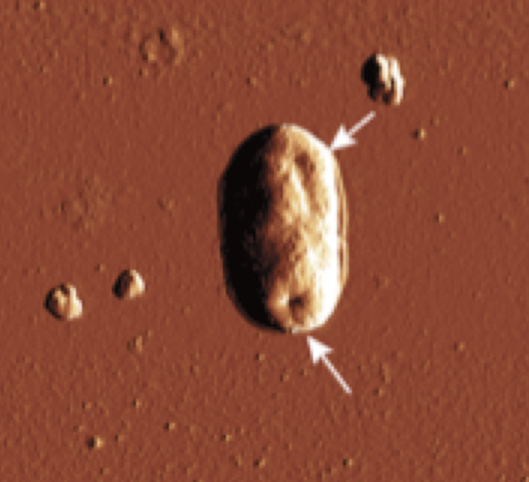
Health & Welfare
Development of 1-monoglycerides against AHPND
1-monoglycerides are known for their antibacterial and antiviral effects in the human pharmaceutical and animal husbandry industries. As a substitution for the preventive use of antibiotics, these molecules are being evaluated in the fight against AHPND.
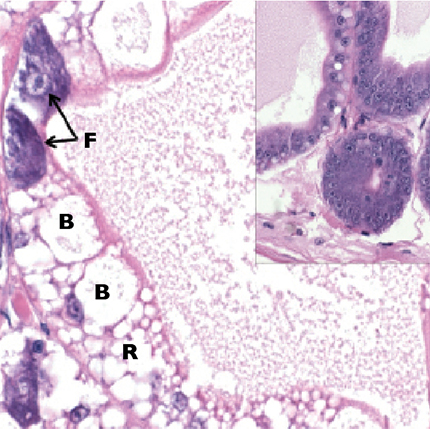
Health & Welfare
Early Mortality Syndrome affects shrimp in Asia
Early Mortality Syndrome is a new disease that has been detected at shrimp farms in Asia. It appears within 30 days of stocking and causes symptoms that include lethargy; soft, darkened shells and mottling of the carapace.
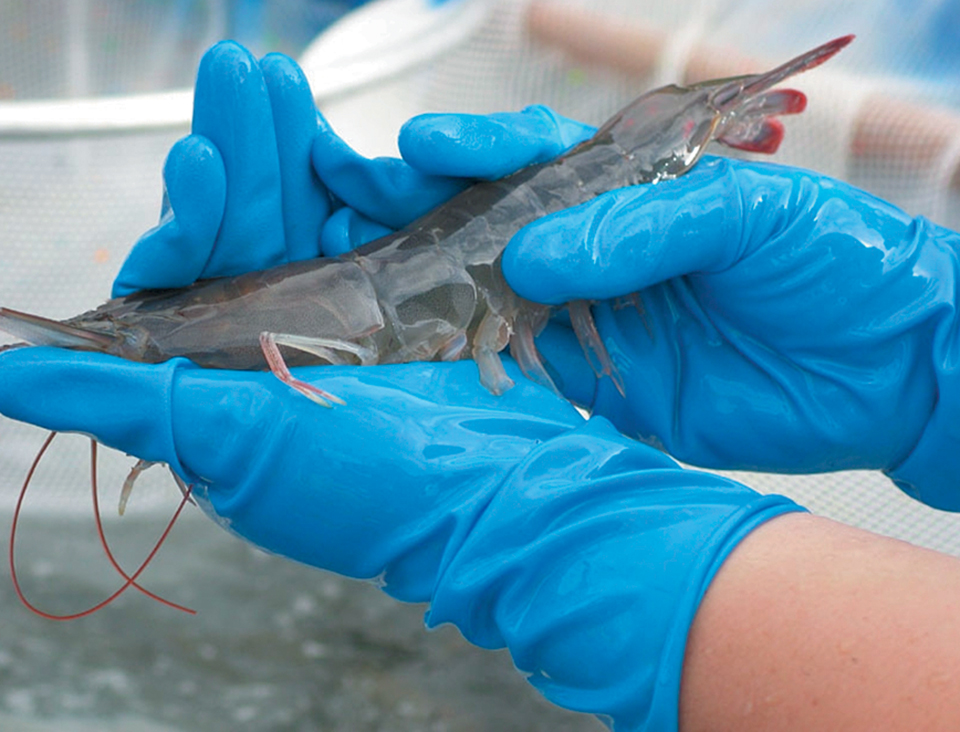
Health & Welfare
Biosecurity principles for sustainable production using SPF shrimp
Basic components of biosecurity include knowledge of diseases, adequate detection methods and the use of “clean” shrimp stocks.



